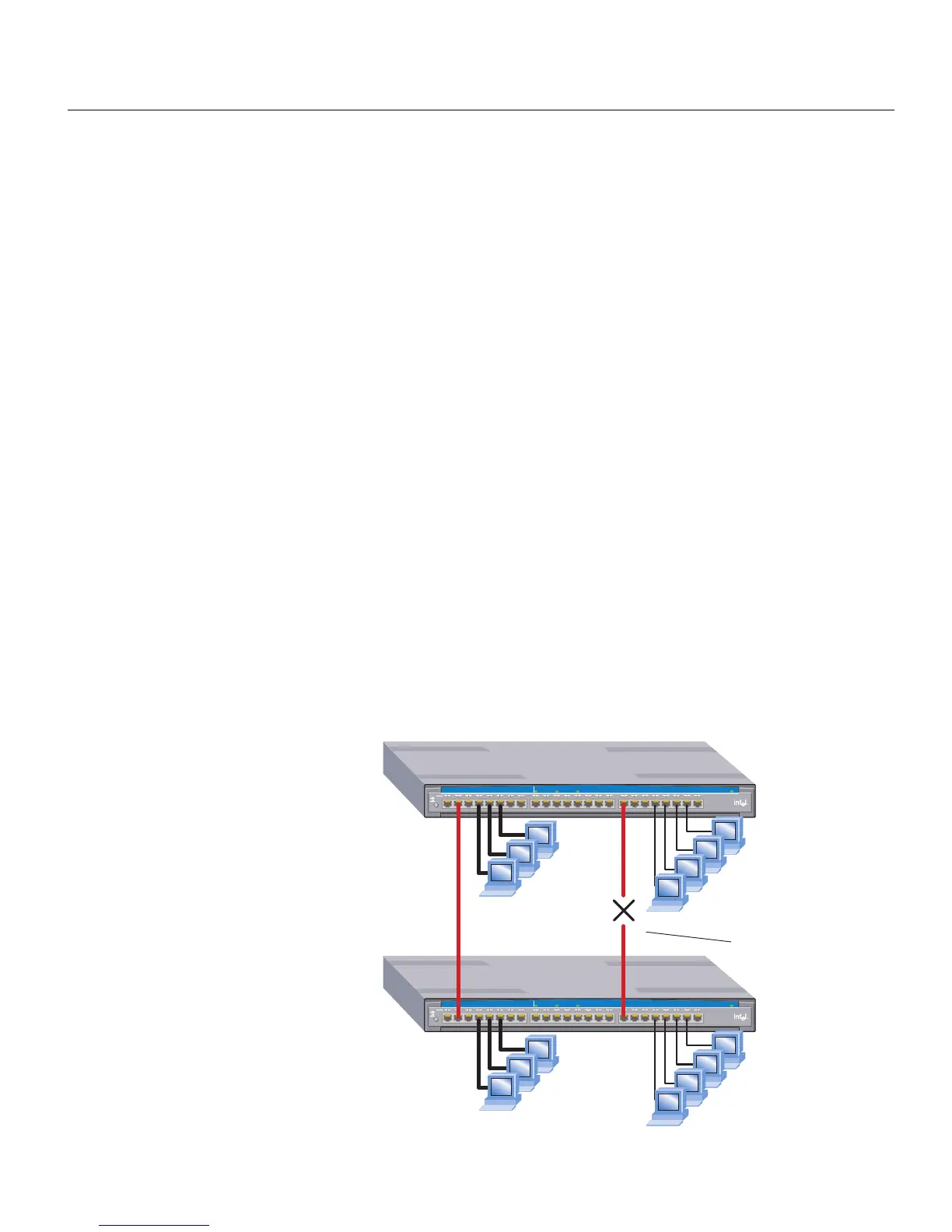20
CHAPTER 2
Intel Express 460T Standalone Switch Users Guide
On the 460T switch, overlapping VLANs can be supported by using 802.1Q-
capable devices. However, for non-802.1Q-capable devices, overlapping
VLANs can be supported by implementing an asymmetric VLAN on the
switch. An asymmetric VLAN is a type of 802.1Q configuration where
endstations send traffic on one VLAN and receive traffic on another VLAN.
The 460T switch supports asymmetric VLANs.
For more information about asymmetric VLANs, see http://support.intel.com
/support or see IEEE 802.1Q Specification Annex B.1.3.
Spanning Tree and VLANs
The 460T supports the Spanning Tree Protocol across the entire switch, not
per VLAN. If a loop occurs in a VLAN the port is disabled and all VLAN
traffic over that port is blocked.
The following diagram shows an example. Both Switch 1 and Switch 2 have
two port-based VLANs configured. Crossover cables connect the
ENG_VLAN on Switch 1 to ENG_VLAN on and Switch 2. Crossover cables
also connect the MRKT_VLAN on Switch 1 to the MRKT_VLAN on Switch
2. When Spanning Tree is enabled, the redundant link between the
MRKT_VLANs is blocked and those VLANs can no longer communicate.
When the switch is running 802.1Q VLANs, Spanning Tree is required for
GVRP (GARP VLAN Registration Protocol) to work properly.
12345678
9 10111213141516 1718192021222324
MDI
MDI-X
Left
Link = Solid Green
Activity = Blinking Green
Collision = Blinking Orange
Right
10Mbps = Solid Orange
100Mbps = Off
Status
Intel
®
Express 460T Standalone Switch
Status
Module A
Link\Act\Coll
Link\Act\Coll
Port 1 Port 2
MKT_VLAN
ports 17-24
ENG_VLAN
ports 1-8
12345678
9 10111213141516 1718192021222324
MDI
MDI-X
Left
Link = Solid Green
Activity = Blinking Green
Collision = Blinking Orange
Right
10Mbps = Solid Orange
100Mbps = Off
Status
Intel
®
Express 460T Standalone Switch
Status
Module A
Link\Act\Coll
Link\Act\Coll
Port 1 Port 2
MKT_VLAN
ports 17-24
ENG_VLAN
ports 1-8
Switch 1
Switch 2
crossover
connecting ENG_VLANs
Spanning Tree disables
the redundant crossover
breaking the connection
between the MKT_VLANs.

